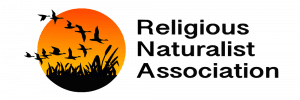Stumbling on The Sacred Wonders of Wilderness
When I was 11 years old my family moved out of the city of Victoria, BC to a nearby rural community. It was a move from a duplex in an urban setting to, what was at the time, a rural community and a house on a sizeable lot. The year was 1955 and the intensive development that would later transform the area was still over a decade away. Although our previous home was not devoid of nature (we lived next to a multi-acre parkland https://www.victoria.ca/EN/main/residents/parks/beacon-hill.html and were only a couple of blocks from the ocean waters of the Straight of Juan de Fuca) the new location was decidedly less developed. The house my parents had purchased was part of a 10 acre property. Behind our house was a chicken coop and behind that was undeveloped forested land.
As a curious 11 year old I soon began to adjust to this new environment as I undertook to explore its unfamiliar mysteries. It didn’t take long for me to become enchanted with the woodlands behind the chicken coop. I discovered wonders there; wonders not found in the managed green spaces I was accustomed to because such wonders exist only in wild, untended lands. I recall being astonished when I came upon, what seemed to me, a magical copse of silver-leafed trees. A kind of ecstasy came over me.There was a gentle breeze shivering the glittering leaves. The memory of this discovery is still a moment I hold in remarkable clarity.
This woodland would become my sanctuary. I spent untold hours exploring its wonders. On one occasion I remember the unexpected surprise of coming across a small clearing in the midst of a growth of tall trees. This place, although I would not have understood the concept at the time, became sacred to me. I immediately set about clearing some bushes and brambles to make a cleaner open area. It was barely fifteen feet across. I had no particular purpose in doing this. It just seemed to me to be a thing that needed to be done. Any practical benefits to be derived from making such a place were not on my mind as I created it but I am now sure I was changed in untold ways by doing so. I was drawn to make my own bond with the natural world without knowing or caring why.
Sadly, I lost some of the sense of that innocent communion with nature over the years that followed. But, thankfully, not entirely. When I entered university I, for reasons I didn’t fully comprehend, decided to major in biology. In my first year I joined the Outdoors Club. Something of my time in those woodlands behind the chicken coop was still alive in me. It lay there, semi-dormant, for quite some time. Then, in 1970, my new wife and I moved to the Okanagan region of British Columbia. We would stay there for nearly 40 years. The little town we lived in, called Keremeos (which means “meeting place of the winds” because three valleys converge there), was surrounded by uninhabited wilderness. Our house was approximately 100 yards from the Similkameen River. My sense of belonging to nature was, for the most part, rekindled and continued to strengthen over the ensuing years.
The wilderness behind the chicken coop is long gone, taken over by sprawling housing developments. While I believe it is unquestionably important to preserve and expand urban green spaces I believe we also need to protect wild spaces and natural habitats. These unspoiled wildernesses are where I most deeply experience being connected to nature.
Decades later I find myself involved with the Religious Naturalist Association. I still remember when I first ran across this worldview how it seemed that I had found a home with people who recognized the significance of the feeling that I had first experienced in the woodlands of my childhood; that I was intimately involved with something profound.
Cheers,
Terry Findlay


